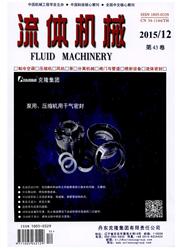

 中文摘要:
中文摘要:
首先采用德图testo435-635-735风速仪测量学生宿舍内风速,然后利用计算流体力学技术,建立了学生宿舍物理模型和数学模型,对宿舍的通风状况进行了模拟计算。湍流模型采用室内零方程模型,速度压力解耦采用SIMPLE算法。对模拟计算结果和试验获得的数据进行了比较验证。在验证模拟计算的准确性的基础上,计算比较宿舍内卫生间靠近窗户侧和卫生间在走廊侧两种布局下,日常生活中的空气新鲜程度;计算比较了宿舍内卫生间靠近窗户侧和卫生间在走廊侧两种布局下,比如非典等传染病突发状况下污染物扩散的快速程度,对污染物从六个床位散发出来的情况进行逐个模拟计算,逐个比较两种布局下的硫化氢质量比例分布。计算结果表明,当宿舍门关闭卫生间排气扇打开时,卫生间靠近走廊侧的空气明显比卫生间靠近窗户侧新鲜;并且突发状况下,卫生间靠近走廊侧的污染物扩散也明显比卫生间靠近窗户侧的快。
 英文摘要:
英文摘要:
At first the air velocity in the student dormitary is measured by testo435-635-735.Then the physical and mathematic models are built up using the technology of the computational fluid dynamics,and the ventilation in the student dormitory is simulated.In the simulation the turbulent model is indoor zero equation and Pressure-Linked Equations is used for Semi-Implicit Method.The calculation results are compared with the datas from the experiment.After the simulation result is proved reasonable,the distributions of the mean air age in the dormitory are calculated.The result shows that the indoor air in the toilet near the corridor is fresher than the air in the toilet near the window.The infectant diffusion in the dormitory is also simulated,the infectant concentrations distribution in the different position are compared,the result shows that the concentration in the toilet near the corridor is lower than that in the toilet near the window.
 同期刊论文项目
同期刊论文项目
 同项目期刊论文
同项目期刊论文
 Experimental study on a new internally cooled/heated dehumidifier/regenerator of liquid desiccant sy
Experimental study on a new internally cooled/heated dehumidifier/regenerator of liquid desiccant sy A new method for determining coupled heat and mass transfer coefficients between air and liquid desi
A new method for determining coupled heat and mass transfer coefficients between air and liquid desi Model validation and case study on internally cooled/heated dehumidifier/regenerator of liquid desic
Model validation and case study on internally cooled/heated dehumidifier/regenerator of liquid desic Modeling and performance analysis of solar air pretreatment collector/regenerator using liquid desic
Modeling and performance analysis of solar air pretreatment collector/regenerator using liquid desic Condensation Risk in a Room with a High Latent Load and Chilled Ceiling Panels and with Air Supplied
Condensation Risk in a Room with a High Latent Load and Chilled Ceiling Panels and with Air Supplied 期刊信息
期刊信息
